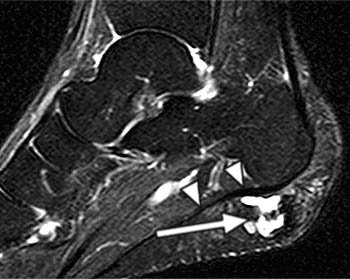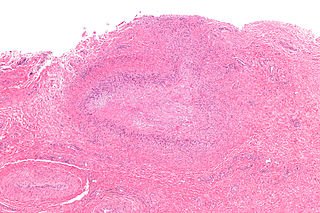Enthesopathy in Rheumatoid Arthritis
Introduction
Rheumatoid Arthritis is a systemic disease.
This means that it can attack many different organs including the skin and the lungs and the eye.
Rheumatoid Arthritis is best known for causing inflammation in the joint lining which is a tissue known as the synovium.
However, there are a number of circumstances in which Rheumatoid Arthritis can affect the enthesis.
Enthesopathy in Rheumatoid Arthritis
Joint lining or synovial inflammation does not respect tissue boundaries so it can spread from the joint lining to he adjacent joint capsules and entheses.
This leads to softening or damage of the joint capsules and entheses and this contributes to the classical joint deformity of the hands in Rheumatoid Arthritis.
This deformity is termed ulnar deviation.
This is best managed by early effective suppression of joint inflammation in Rheumatoid Arthritis.
Direct involvement of enthesis in Rheumatoid Arthritis
Rheumatoid Arthritis is associated with the development of nodules. These contain inflammatory cells.
 |
 |
| Rheumatoid Nodules can occur over entheses in this case the plantar fascia. Image courtesy of Radsource. | Rheumatoid Nodules can occur over entheses. Historically it has been noted that nodules occur at sites of tissue trauma. |
Nodules can occur over entheses including the Achilles tendon or the plantar fascia in the foot.
Due to the disabling pressure effects these have to be sometimes surgically removed.
The enthesis and bone erosion in Rheumatoid Arthritis
Rheumatoid arthritis related bone erosion in the hands occurs immediately adjacent to the enthesis insertion [1].
The erosion occurs where the enthesis organ exerts pressure over the bone at synovio-entheseal complexes [2].
Even in normal subjects small erosion are evident on computerised tomography scanning, magnetic resonance imaging scanning and in tissue studies from human joints [1, 3].
Joint inflammation that is typical of Rheumatoid Arthritis tips the balance away from tissue repair of small entheseal erosions towards large erosions and severe bone damage.
The role of the synovio-entheseal complex as a possible site of origin of joint inflammation in Rheumatoid Arthritis has not been explored to date.
Other causes of enthesopathy in Rheumatoid Arthritis
The chronic joint deformity that can occur in Rheumatoid Arthritis may be associated with the development of joint mal alignment and secondary enthesopathy.
The deformity and joint inflammation may lead to functional enthesis disease where tendons wrap around the foot bones.
These may rupture causing significant pain.
If a patient with a diagnosis of Rheumatoid Arthritis develops inflammatory enthesitis then it needs to be considered whether:
- they may actually have psoriatic arthritis masquerading as Rheumatoid Arthritis
- they may have Rheumatoid Arthritis and also an associated Spondyloarthropathy such as Psoriatic Arthritis (this is rare).
Finally patients with Rheumatoid Arthritis may also get mechanically induced enthesopathy independently of Rheumatoid Arthritis.
Summary
Enthesitis and Enthesopathy play important roles in different aspects of Rheumatoid Arthritis.
In general early treatment of Rheumatoid Arthritis will minimise the chances of entheseal damage.
References
